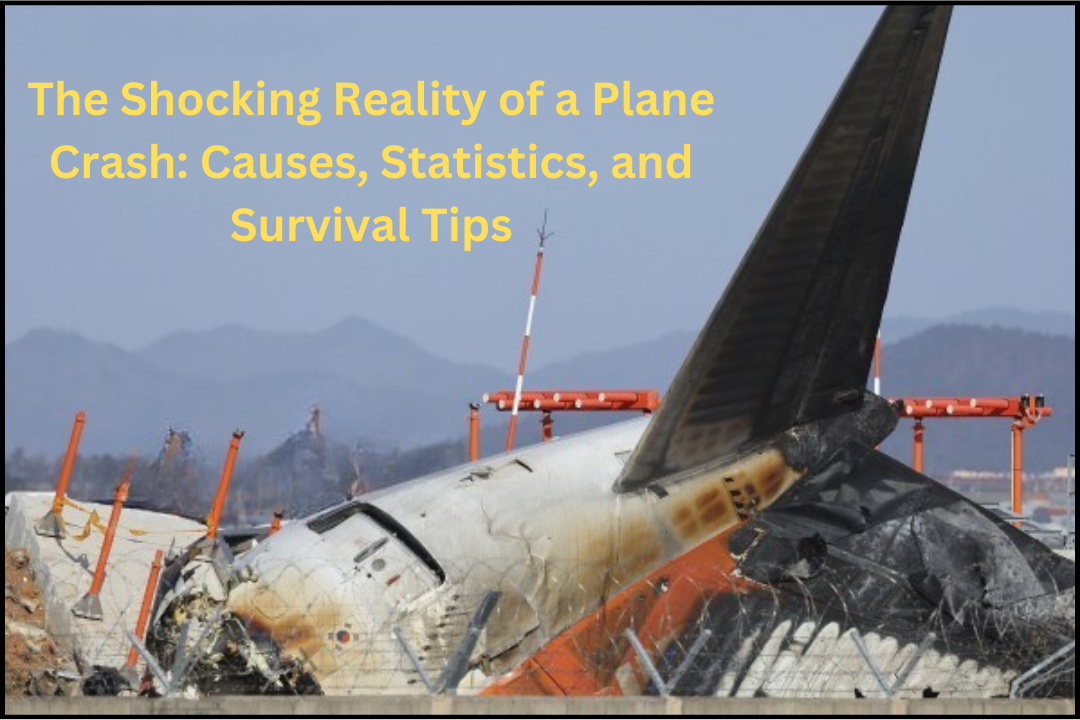Introduction
A plane crash is one of the most feared disasters in modern transportation. Despite the rigorous safety measures in aviation, accidents still happen, leaving behind a trail of devastation, loss, and unanswered questions. Understanding the causes, survival tactics, and aftermath of aviation accidents can help passengers feel more prepared and informed about the risks associated with air travel.
Understanding the Causes of Plane Crashes
1. Human Error
Pilots, air traffic controllers, and maintenance personnel play crucial roles in ensuring safe flights. Unfortunately, human error accounts for nearly 50% of all aviation accidents. Miscommunication, incorrect navigation, and misjudgments during emergencies can lead to catastrophic results.
2. Mechanical Failure
Aircraft are complex machines, and even a minor mechanical failure can lead to a disaster. Malfunctions in engines, landing gear, or control systems can render a plane uncontrollable, increasing the risk of a plane accident.
3. Weather Conditions
Severe weather, such as thunderstorms, turbulence, and extreme winds, can make flying dangerous. Poor visibility due to fog or heavy rain often contributes to miscalculations in landing and takeoff, leading to aviation disasters.
4. Bird Strikes
Bird strikes, while uncommon, have been responsible for several airplane crashes. When birds collide with aircraft engines, they can cause engine failure, forcing an emergency landing.
5. Sabotage and Terrorism
Although rare, deliberate attacks and hijacking incidents have led to some of the most infamous air disasters in history. Security measures have since been tightened to prevent such tragedies.
6. Fuel Issues
Running out of fuel or fuel contamination can be deadly. Pilots rely on precise fuel calculations, but mistakes in refueling or mismanagement can cause engine shutdown mid-flight, leading to a flight catastrophe.
Plane Crash Statistics: How Safe is Air Travel?
| Aspect | Data & Facts |
|---|---|
| Plane Crash Fatality Rate | 1 in 11 million flights |
| Safest Airlines | Emirates, Delta, Qantas |
| Most Common Cause | Human Error (50%) |
| Deadliest Year | 1972 (2,373 deaths) |
| Survival Rate | 95.7% in certain accidents |
Although plane crashes dominate headlines, air travel remains one of the safest modes of transportation. Statistically, a person is more likely to be struck by lightning than be involved in an aviation accident.
Survival Tips in a Plane Crash
1. Choose the Right Seat
Studies suggest that passengers seated within five rows of an emergency exit have a higher survival rate. Aisle seats in the rear of the plane offer the best odds of survival in the event of a crash landing.
2. Dress Appropriately
Wearing long sleeves, pants, and sturdy shoes can protect against burns, debris, and harsh conditions during an emergency evacuation.
3. Listen to Safety Instructions
Many passengers ignore safety briefings, but knowing the location of exits, life vests, and oxygen masks can be lifesaving in a plane emergency.
4. Brace for Impact
The brace position reduces the risk of head and limb injuries. Keep your feet flat, head down, and arms wrapped around your head to minimize injury during a crash landing.
5. Move Quickly
You have 90 seconds to escape before a fire spreads uncontrollably. Avoid grabbing personal belongings—focus on getting to an exit as fast as possible.
The Aftermath of a Plane Crash
Psychological Impact on Survivors
Survivors often experience post-traumatic stress disorder (PTSD), anxiety, and depression. Counseling and therapy are crucial for mental recovery after experiencing an air disaster.
Investigation Process
Authorities like the National Transportation Safety Board (NTSB) and Federal Aviation Administration (FAA) conduct in-depth investigations to determine the cause of an aviation accident and prevent future tragedies.
Safety Improvements
Each plane accident leads to changes in safety regulations. Stricter pilot training, improved aircraft design, and enhanced emergency response protocols contribute to safer skies.






